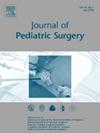Clinical Characteristics and Postoperative Functional Outcomes in Children With Mowat-Wilson Syndrome and Hirschsprung's Disease: A Single-center Study
IF 2.4
2区 医学
Q1 PEDIATRICS
引用次数: 0
Abstract
Background
Mowat-Wilson Syndrome (MWS) is a rare autosomal dominant genetic disorder. Approximately half of individuals with MWS present with Hirschsprung's Disease (HSCR). There is no nested case–control study that correlates with its prognosis. This study aimed to compare the mid-to-short-term postoperative prognosis between children with MWS-associated with HSCR and those with isolated HSCR.
Methods
A retrospective analysis was conducted on clinical data of HSCR patients who underwent surgery at a pediatric hospital from January 2016 to June 2023. Patients with MWS-associated HSCR were identified through confirmed mutations in the ZEB2 gene. Propensity score matching (PSM) was used for comparative analysis.
Results
Among the identified cases, 11 had MWS-associated HSCR, and 1088 had isolated HSCR, with 44 HSCR-alone patients included in the control group after PSM. The case group comprised 7 males and 4 females, with a median age of 4 years and a median age at surgery of 3.96 months (IQR, 2.04–8.52). The study found no significant difference in the incidence of postoperative Hirschsprung-associated enterocolitis (HAEC) between the two groups, although severe abdominal distension symptoms were more prevalent in the case group. However, the median period of recurrent HAEC from the first to the last occurrence in the case group was longer at 18 months (IQR, 3–30) compared to 0 months (IQR, 0–6) in the control group. Additionally, the case group exhibited a higher rate of constipation and significantly poorer bowel function compared to the control group. Other mid-to-short-term complication rates were comparable between the two groups.
Conclusions
Children with MWS-associated HSCR face greater challenges in postoperative recovery, including a longer period of recurrent HAEC, more severe constipation, and poorer bowel function, highlighting the need for focused prevention and enhanced intestinal management in this patient population.
求助全文
约1分钟内获得全文
求助全文
来源期刊
CiteScore
1.10
自引率
12.50%
发文量
569
审稿时长
38 days
期刊介绍:
The journal presents original contributions as well as a complete international abstracts section and other special departments to provide the most current source of information and references in pediatric surgery. The journal is based on the need to improve the surgical care of infants and children, not only through advances in physiology, pathology and surgical techniques, but also by attention to the unique emotional and physical needs of the young patient.

 求助内容:
求助内容: 应助结果提醒方式:
应助结果提醒方式:


